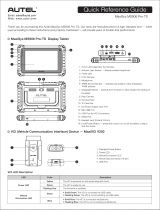Disclaimer
Carefully read this entire document and all safe and lawful practices provided by DJITM before using this product
for the first time. Failure to read and follow instructions and warnings may result in serious injury to yourself or
others, damage to your DJI product, or damage to other objects in the vicinity. By using this product, you hereby
signify that you have read this document carefully and that you understand and agree to abide by all terms and
conditions of this document and all relevant documents of this product. You agree that you are solely responsible for
your own conduct while using this product and for any consequences thereof. DJI accepts no liability for damage,
injury, or any legal responsibility incurred directly or indirectly from the use of this product.
DJI is a trademark of SZ DJI TECHNOLOGY CO., LTD. (abbreviated as “DJI”) and its affiliated companies. Names
of products, brands, etc., appearing in this document are trademarks or registered trademarks of their respective
owner companies. This product and document are copyrighted by DJI with all rights reserved. No part of this product
or document shall be reproduced in any form without the prior written consent or authorization of DJI.
This document and all other collateral documents are subject to change at the sole discretion of DJI. This content is
subject to change without prior notice. For up to date product information, visit the product page for this product at
http://www.dji.com.
This document is available in various languages. In the event of divergence among different versions, the English
version shall prevail.
Important
Stay alert when using the DJI Smart Controller V2.0 to control an Unmanned Aerial Vehicle (UAV). Carelessness
may result in serious harm to yourself and others. Download and read the user manuals for the aircraft and Smart
Controller V2.0 before using for the first time.
1. Fully charge the remote controller before each flight.
2. The remote controller will sound an alert if it is powered on but has not been used for five minutes. It will
automatically power off after a further 30 seconds. Move the control sticks or perform any other remote controller
action to cancel the alert.
3. Make sure the antennas of the remote controller are unfolded and adjusted to the proper position for optimal
transmission.
4. Contact DJI Support to repair or replace the antennas if they are damaged. Damaged antennas greatly decrease
performance.
5. Link the remote controller and the aircraft every time the aircraft is changed.
6. Make sure to power off the aircraft before the remote controller.
7. Fully charge the remote controller every three months.
8. Charge the remote controller immediately if the power level reaches 0%. Otherwise, the remote controller may be
damaged due to being over discharged for an extended period. Discharge the remote controller to between 40% and
60% if stored for an extended period.
9. DO NOT cover the air vent or the air intake on the remote controller. Otherwise, the performance of the remote
controller may be affected due to overheating.
10. DO NOT disassemble the remote controller without the assistance of a DJI authorized dealer. Contact DJI or a
DJI authorized dealer to replace the components of the remote controller.









 Autel Intelligent Tech MS906 Pro-TS Mode d'emploi
Autel Intelligent Tech MS906 Pro-TS Mode d'emploi
 JACS Solutions TD191-B USB Dongle Mode d'emploi
JACS Solutions TD191-B USB Dongle Mode d'emploi
 Autel Robotics V3 Mode d'emploi
Autel Robotics V3 Mode d'emploi